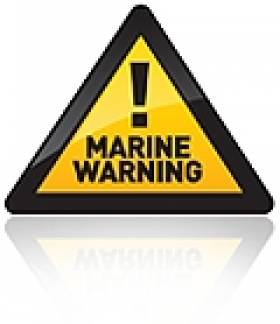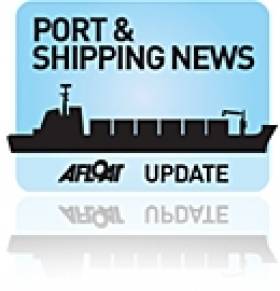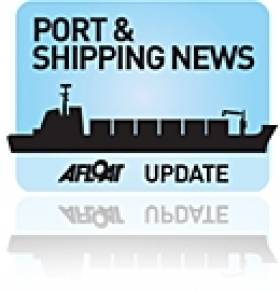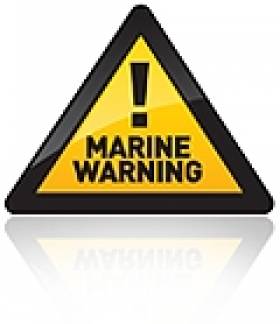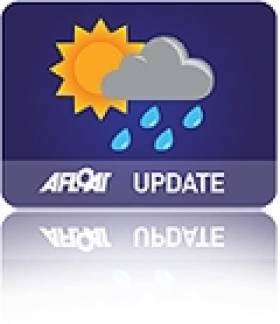Displaying items by tag: wind
Coast Guard Advises Caution in Severe Weather
The Irish Coast Guard has advised members of the public to take care in the current severe weather conditions, particularly around the coast and in exposed areas.
Sea Activities
Avoid sea or water-based activities today if possible.
Cliff Walking
There is safety in numbers. Always let someone know when and where you are going, and when you are expected to return. Stay well away from cliff edges, both top and bottom. Don't attempt to rescue people or pets if they fell over a cliff edge. If assistance is needed dial 999 or 112 and ask for the Coast Guard.
Kitesurfer Injured in West Cork
The Irish Times reports that the man got into difficulty in high wins while kitesurfing in Courtmacsherry Bay.
He was taken by Irish Coast Guard helicopter to Cork University Hospital, where he is reportedly in a stable condition.
Two kayakers and two windsurfers were also rescued in the Kinsale area on the same day in treacherous windy conditions.
Kelly to Give Keynote Address at Wind Energy Conference
Mr Kelly is a keen supporter of wind energy and through his presence on the key Energy Committee in the European Parliament, has called for Ireland to generate more electricity from this resource in order to become less dependent on imported fossil fuels and eventually export power to lucrative EU markets.
The IWEA's Annual Conference takes place over the 24th-25th March 2011 at the Four Season's Hotel, Dublin.
World's Largest Kite-Powered Vessel On The Way
Cargill Ocean Transportation has signed on with an innovative new company to launch the world's largest ever kite-propelled vessel. (Scroll down for Video)
The Hamburg-based company SkySails claims its technology can generate enough propulsion to reduce fuel consumption by up to 35% in ideal sailing conditions.
SkySails' system uses a computer-controlled kite connected by rope, flying between 100m and 420m in a figure-of-eight. The auomated system steers and adjusts the kite to maximise the wind benefits and requires minimal action by crew.
At the end of this year Cargill plans to install a 320sqm kite on a chartered handysize ship with a view to full operation by early 2012.
The firm intends to partner on the project with "a shipowner supportive of ennironmental stewardship in the industry".
Storm Strands Ferry in South Devon Bay
Thursday night's stormy seas forced a car ferry with more than 40 Irish-bound passengers to shelter in a south Devon bay.
The Herald Express in Devon reports that the Norman Voyager, which left Cherbourg on Wednesday night, was due to arrive in Rosslare by Thursday afternoon.
But stronger than usual winds from the Atlantic storm system persuaded the captain to forgo the usual refuge of Falmouth and take shelter in Torbay, rather than risk the 186-metre vessel in the turbulent waters of the Irish Sea.
Local Coastwatch member Brian Knowles spotted the ferry seven miles of Berry Head.
"It's very unusual to have a passenger ferry here," he said, remarking that 12 ships were anchored in Torbay and nearby Babbacombe Bay to shelter from Force 12 winds.
Stay Away from the Edge Warns Irish Water Safety
Irish Water Safety is asking people to keep away from the water's edge during the current violent storm force winds and high seas. Ireland averages 153 drownings every year and every year a number of tragedies occur as a result of people walking too close to the edge of coastal areas, cliffs, rivers and lakes during such stormy conditions.
Irish Water Safety is also asking those who own a small craft to make sure that it is well secured and when doing so, to wear a lifejacket at all times as there have been drownings during such activities in the past.
Motorists need to be particularly vigilant to avoid flooded areas on roads but particularly near rivers, because with poor light and short days it is not possible to determine the depth of floods easily. Swift water will carry cars and other vehicles away and there have been very tragic drownings in the past as a result of such accidents.
Children are naturally curious about water, therefore parents should caution them that floodwater hides the true depth and that manhole covers may be open and that small streams when swollen are very fast and deeper than normal.
What should I do when I hear a Flood Warning?
· Listen to the national and local radio for met eireann updates and AA Road watch updates
· Check on neighbours particularly if they are elderly, infirmed or families with young children
· Move your vehicles to higher ground
· Move animal stock to higher ground
· Check your small craft to ensure they are well secured or moored
· Make sure you have warm clothes, food, drink, a torch and radio.
· Block doorways and airbricks with sandbags or plastic bags filled with earth. Floodgate products will work effectively also.
· Switch off gas and electricity supplies if flooding is imminent.
· Check the time of High Water in the Newspaper.
· Check out www.flooding.ie for more detail on General flooding
Personal Safety
· Avoid flood waters at all times
· carry a mobile phone at all times in case you need to call for help - call 112 or 999 in emergency
· Wear suitable protective clothing & a lifejacket in on or around water
· Do not enter fast flowing water.
· Never put your feet down if swept away by fast flowing waters
· Flooding on roads will be deeper at dips and around bridges.
· Stay away from sea and flood defences.
· when walking or driving, be aware of manhole covers and gratings that may have been moved due to the heavy flow of water.
· Take care when using electric appliances in damp or flood conditions.
· Remember that during the hours of darkness the dangers are multiplied.
After the flood
· Avoid eating food that has been in contact with flood water.
· Run water for a few minutes and wash your taps.
· Check gas and electricity supply.
· Leave wet electrical equipment alone to dry and have it checked prior to use.
· Ventilate your property well.
· Check on elderly neighbours.
Bray Web Cam Captures Storm Scenes
East North East winds that hit the country overnight are creating big waves on the East coast this morning. Bray Sailing Club's web cam is picking up the storm waves breaking at the mouth of the North Wicklow harbour HERE. (Check back at lunchtime, the time of high water today). More Webcam views at Dun Laoghaire HERE
Light Winds Forecast for Weekend
As thoughts turn towards weekend boating fixtures, it looks like winds – or the lack of them – will be the deciding factor for sailing events. On Dublin Bay forecasters are holding out the prospect of afternoon sea breezes for the weekend's National Cruiser Racer Championships as gradient winds remain light and variable. This morning the meteorological situation is that a light to moderate and moist southwesterly airflow covers the country as high pressure continues to build from the southeast. Met Eireann are giving the following Sea Area forecast.
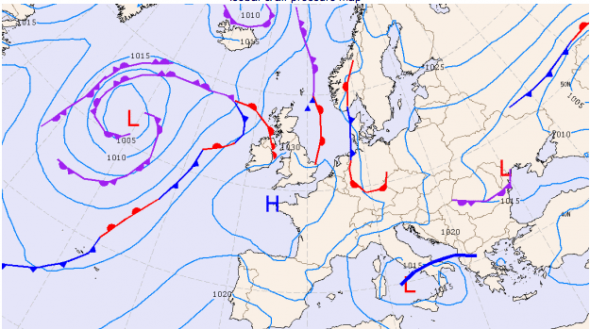
Forecast for coasts from Mizen Head to Slyne Head to Bloody Foreland
Wind: South to southwest force 3 or 4. Decreasing variable mainly southerly force 2 to 4 this evening or early tonight, strongest for southwest coasts.
Forecast for coasts from Bloody Foreland to Carnsore Point to Mizen Head and the Irish Sea
Wind: South to southwest or variable force 2 to 4, strongest along the east coast and on the Irish Sea. Decreasing variable force 3 or less early tonight.
Weather for all sea areas: Patches of mist, drizzle and fog. Becoming mainly fair later today.
Visibility for all sea areas: Moderate or poor at times, improving mostly good.
Outlook for a further 24 hours until 0600 Saturday 22 May 2010: Light to moderate southerly or variable winds. Fair, apart from drizzle, mist and fog patches.


























